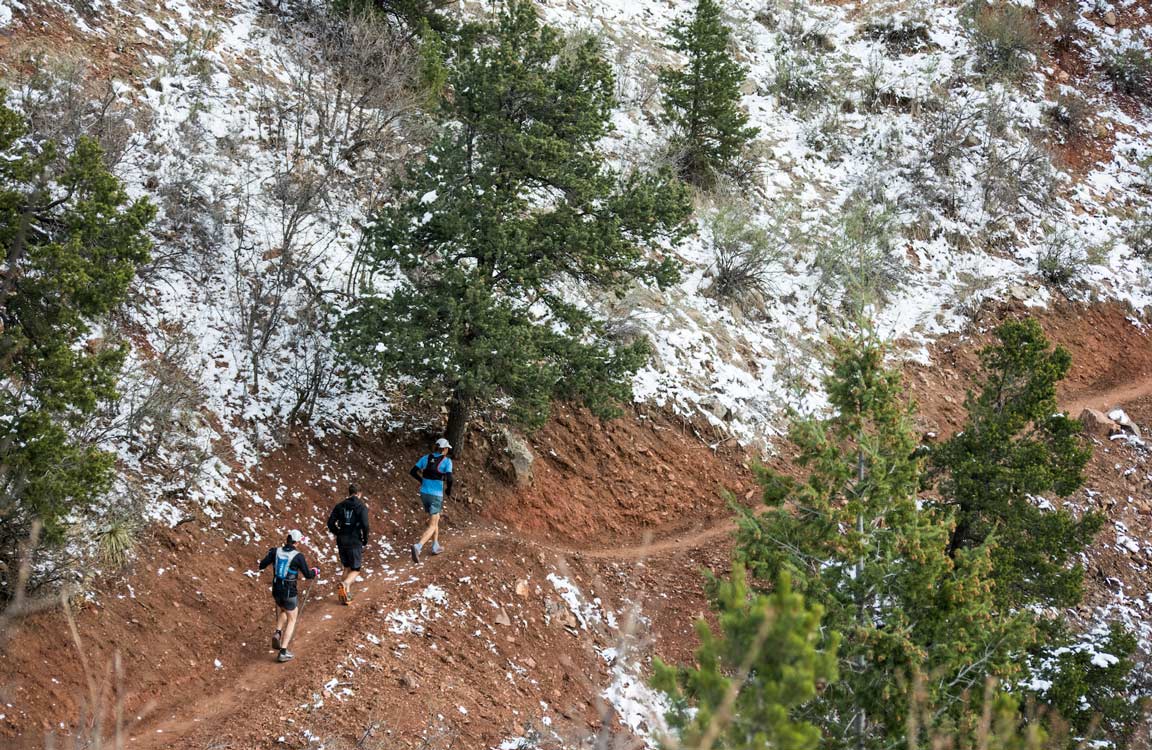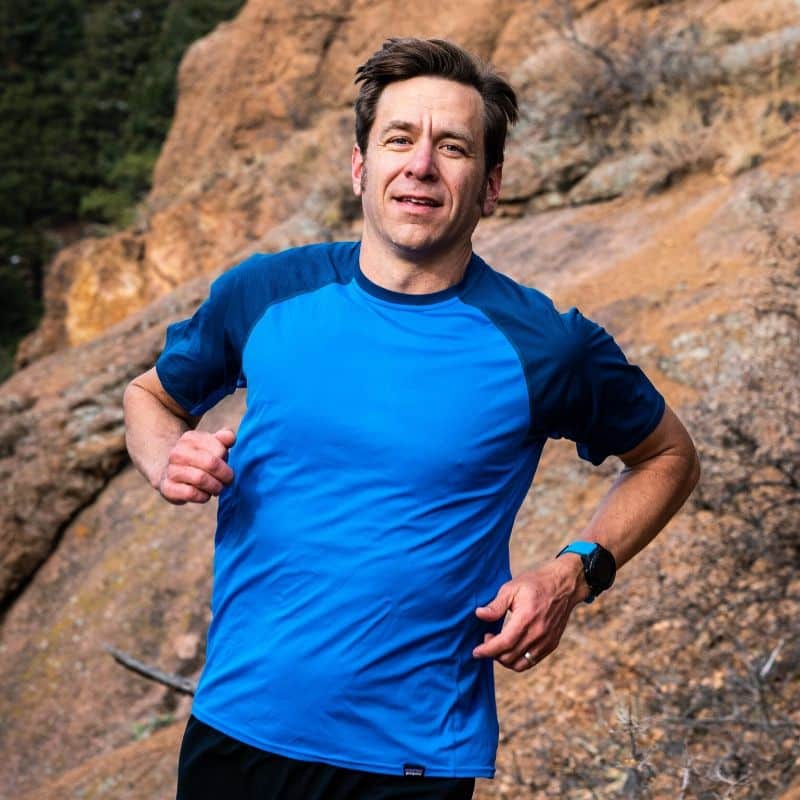
4 Ways to Work on Your Ultrarunning Weaknesses This Winter
By Jason Koop,
Head Coach of CTS Ultrarunning
As winter gets into full swing, many runners are stuck in this no-person’s land of motivation. Without an event to focus on in the near term, the desire to train wanes. You might skip a run here, cut a run short there or just not be as disciplined as you would otherwise. Part of this behavior is healthy. You should take a mental and physical break if you have had a hard season of racing and training. But, after about two months recharging the batteries, the rest phase turns into sheer laziness if you have only been punching the minimum amount of training hours. In order to kickstart your season, I suggest taking inventory of your running weaknesses and take the time to develop those during the winter. Below are the four most common weaknesses I see in ultrarunners and some simple steps on how to fix them.
If your weakness is speed, then run fast
Ultrarunners are notorious for not doing speedwork. We think that long, slow distance is the only pathway for improved performance. There is some truth to that, as up to 90% of your weekly time should be at an EnduranceRun or RecoveryRun intensity. But, there are some opportunities for improvement in that remaining 10%. With many ultrarunners, I will have them do the majority of their intensity uphill. This acts as a hedge, of sorts, against injury, as the speed is reduced and forces are lessened. However, if your weakness is footspeed it’s time to turn it over. The best venue for this is the good ‘ole track.
The workout- 10 X quarters with 200 meters rest
After a 10 to 15 warm up that includes some dynamic stretching and strides, it’s time to toe the line! Run 10-12 x 400-meter repeats with a 200-meter jog rest. Each repeat should be as fast as you can hold for the entire set. If paced correctly, you should be no more than 2-3 seconds difference between any of the intervals. You can do this workout once or twice a week with at least a day of recovery in between sessions.
If your weakness is climbing, then climb hard
If you are constantly getting dropped on the climbs, then climbing is likely a weakness for you. In any mountainous or hilly ultramarathon, you will spend more time climbing than descending. In this sense, a 1% improvement on the climbs is worth more than a 1% improvement on the descents. Fortunately, the fix is easy: climb hard.
The workout- Climb hard, descend easy
For your next 1:30- to 2-hour run, pick a route with a variety of climbs of different grades and lengths. The more variety, the better. The workout is easy, when you get to any uphill of a grade >5%, punch it up the climb as hard as you can. On the descents or flat parts, run (or walk) as easy as possible. The key is to choose terrain that will have as much variety, length and gradient as possible. This will make each uphill effort unique, as you will be naturally running a bit harder for the short uphills and not quite as hard as the length of the climb increases. When most ultrarunners work on climbing, they pick long climbs that tend to be gradual and monotonous. That might make you better at that one particular climb, but in the real world, running uphill comes in a variety of grades, durations and intensities. I don’t recommend doing this type of run on runs over 2 hours, as the total time at intensity tends to be too long to accommodate a variety of intensities on the climbing portions. You can do this type of run one to two days per week.
If your weakness is technical descending, get some skills
Constantly stumbling over rocks or getting dropped on technical descents? Then it’s time to improve your trail skills! Trail skill, as opposed to speed, is an essential part of an ultrarunner’s toolkit. Sure, we’ve all seen the sexy GoPro videos of our favorite trail runner bombing down some ridiculously steep and gnarly terrain, surely about to catch a toe and yard sale at any given moment. Not to be too much of a buzzkill, but real world ultrarunning is much different. For the majority of ultrarunners, downhill running is a ‘damage-the-least’ proposition where fluidity and smoothness trump reckless speed (and yes, even the best downhill runners take a tumble every now and then). While downhill speed might make a small difference down one descent, trail skill will preserve your legs for the long haul and provide benefits descent after descent after descent.
The workout- look ahead and be quiet
At least once per week, go and find a technical section of trail where you can deliberately practice your vision and running quiet. The trail need not be long (100 meters will be more than sufficient) but should be moderately technical. This means somewhere that you have to pay attention to where you are placing your feet, but it’s still within your skill level to run while being attentive. Instructions for the drill can be found in an earlier article I wrote here. You can do these drills up to three times per week. If you are also doing hard workouts, these can be done on the recovery days as the effort will be relatively low.
If your weakness is your stomach, do some research
Gastrointestinal distress is the top reason ultrarunners cite the reason for a DNF. Normally, I would advocate for training the gut and developing your race day nutrition plan to relieve ultrarunners of this (unnecessary) excuse. However, winter normally means shorter long runs, and long runs are the best opportunity to train the gut and develop your race day nutrition plan. So, instead of doing something physical to shore up your nutritional game plan, do something intellectual- read some research on sports nutrition. Fret not, I’m not asking anyone to subscribe to an academic journal. Fortunately, there are enough nutritionists and RDs out there that are quite astute at distilling the latest research into practical bite-sized nuggets of actional information. The internet being, well, the internet, the key is to find sources that are well researched from experts who will do an unbiased review and consolidation of the research.
To give it a start, here are some of my favorite resources-
► Free Ultrarunning Training Assessment Quiz
Take our free 2-minute quiz to discover how effective your training is and get recommendations for how you can improve.
My Sports Science website by Asker Jeukendrup
The Dr. Bubbs Performance Podcast
Enjoying This Article? Get More Free Running Training Tips
Get our coaches' best training advice, delivered straight to your inbox weekly.
It’s easy to search within these (and other) resources on a particular topic. I recommend that athletes pick one topic at a time (say, sodium supplementation) and gather 2-3 resources to pour through in succession.
The winter is the time to work on your weaknesses. We all have them and it’s OK to admit that you are bad at something. What’s not OK is ignoring what you are not good at, as if sweeping the fact that you can’t run over technical terrain under the rug will make it go away. Face your weaknesses this winter. You will be a better ultrarunner from it!
Postscript
I am happy to announce the launch of the KoopCast Podcast this week. I feel that this podcast has been a few years overdue and I’m excited to finally get it off of the ground. The KoopCast will feature athletes and experts in the ultrarunning community in a roundtable format designed at inspiring and informing you! You can catch the KoopCast on all of your favorite Podcasting platforms including Apple Podcasts, Google Podcasts, Spotify, Stitcher, and SoundCloud. I hope you all give it a listen!


Comments 1
Pingback: Creating a Successful Off-Season for Ultrarunners - Jason Koop